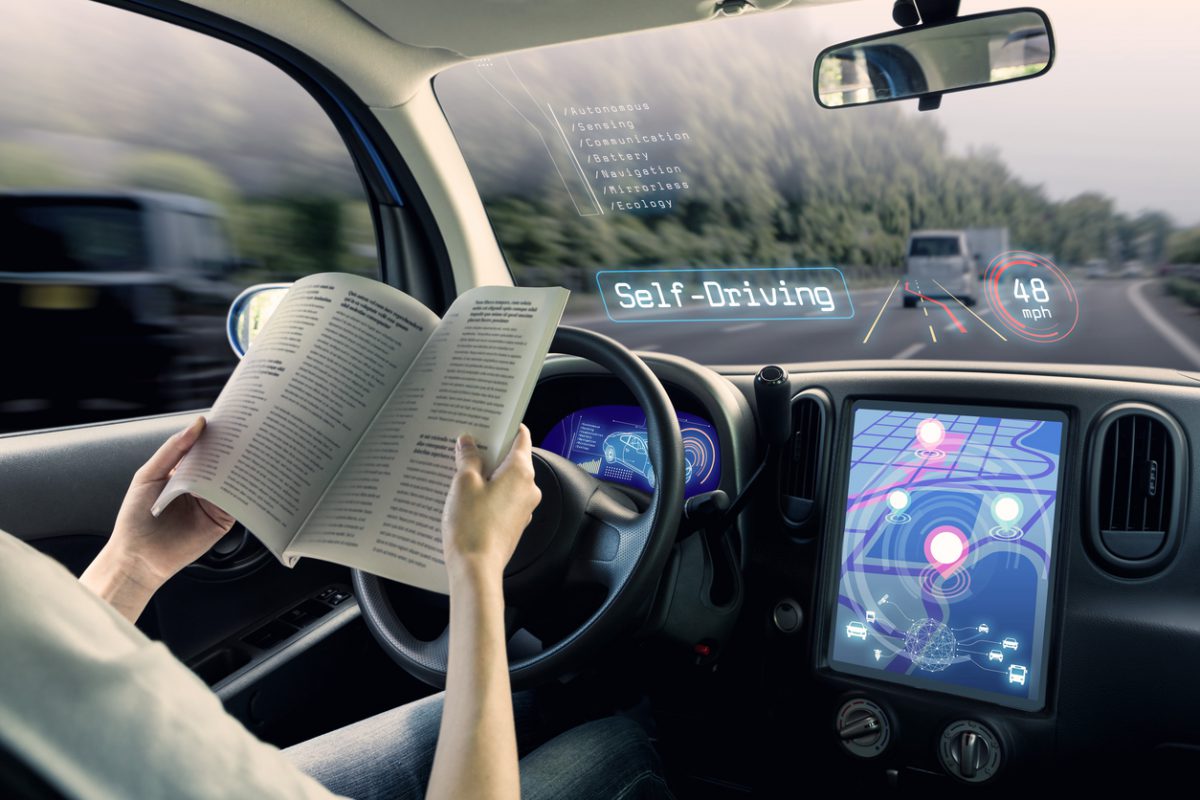A new breakthrough in quantum encryption, robotic headhunter Helena, new AI products to leverage machine learning for Radiology, and Amazon-Intuit AI partnership among today's trending news in data science news.
A new technique to transmit quantum encryption codes quickly and safely
Researchers aim for unbreakable encryption in quantum computers as new breakthrough drastically increases the speed of current QKD transmission
Amid possible security threats to the forthcoming quantum computers, researchers have been trying to make the quantum data encryption hack-proof. In this regard, photon-based quantum encryption could help companies better defend against cyber threats, which is now one step closer to reality thanks to a breakthrough research from Duke University. In the new system, researchers have increased the speed of QKD (quantum key distribution) transmission by between five and 10 times the current rates. Up until now, speeds were restricted to between tens to hundreds of kilobits a second. QKD transmission is theoretically unhackable because it utilizes quantum uncertainty in data transmission: If an attacker even tries to read the encryption key it will change its state, notifying the sender and recipient that they're under attack. Interestingly, the researchers developed the system with nothing but commercially available telecommunication hardware. One of them said that the hardware used by the research team could be even engineered to fit into a single computer-sized box, and it could become a feasible piece of security hardware in the near future. Their paper is available here.
Now an AI to connect the right candidate for the right job opportunity
Announcing Helena, the first ever robotic headhunter for employers
Woo has launched a new AI-powered headhunter ‘Helena’ that automatically scouts, approaches and sources the best candidates on behalf of employers. Unlike using an expensive headhunter to manually source and screen a limited number of candidates for specific jobs, Helena uses data science to hire. Helena serves not only as company headhunter; she also serves as job seeker’s agent, sparing both sides the need to actively search for each other. Woo said it has invested more than two years building Helena, by putting together a 'dream team' of the best recruiters and data scientists from industry-leading companies such as Google and Facebook, as well as top algorithm engineers.
Announcing new AI solutions at Radiological Society of North America (RSNA)
Nuance AI Marketplace for Diagnostic Imaging: Nuance leverages Nvidia’s deep learning for radiology
At the ongoing Radiological Society of North America conference (RSNA) in Chicago, Nuance Communications and Nvidia will show a live demo of a new solution they have jointly developed to use machine learning into radiology: Nuance AI Marketplace for Diagnostic Imaging. Nuance will be in South Hall A, Booth 2700, and Nvidia will be in North Hall 3, Booth 8543 at the RSNA. Nuance AI Marketplace for Diagnostic Imaging combines Nvidia’s deep learning platform with Nuance’s PowerScribe radiology reporting and PowerShare image exchange network, used by 70 percent of all radiologists in the United States. The Marketplace makes it easy for radiology departments to seamlessly integrate AI into existing workflows. For instance, Nvidia’s deep learning platform can ingest normal and abnormal chest X-ray data, and create an algorithm to identify which images display pneumonia. Nuance can then integrate the images into different categories, alerting radiologists how each individual case should be prioritized.
Change Healthcare, Dicom Systems ink strategic partnerships with Google Cloud to apply AI into medical imaging analytics
At the ongoing RSNA conference, Change Healthcare and DICOM Systems have collaborated with Google Cloud to help hospitals tackle the storage challenges, improve radiology workflows, and bring machine learning to imaging analytics among others. Change Healthcare has teamed up with Google Cloud to develop new tools for radiologists, building a scalable data infrastructure to enable more effective insights via machine-learning technology. Whereas Dicom Systems said it is working as a technology partner with Google Cloud to launch a hybrid cloud VNA, de-identification and imaging data supply chain platform.
Amazon Web Services (AWS) in data science news
Announcing AWS Machine Learning Research Awards to fund machine learning research
Amazon Web Services have announced the AWS Machine Learning Research Awards, a new program that funds university departments, faculty, PhD students, and post-docs conducting innovative research in machine learning. Amazon is working with Carnegie Mellon University, California Institute of Technology, Harvard Medical School, University of Washington, and the University of California, Berkeley on this program. The goal of this program is to help researchers accelerate the development of innovative algorithms, publications, and source code across a wide variety of machine learning applications and focus areas. In addition to funding, award recipients receive computing resources, training, mentorship from Amazon scientists and engineers, and have the opportunity to attend a research seminar at the AWS headquarters in Seattle.
Intuit to use AWS as its standard artificial intelligence platform
Intuit Inc. has selected Amazon Web Services (AWS) for its machine learning and artificial intelligence workloads, and plans to integrate AWS Lex technology for its QuickBooks Assistant and other products. Intuit will also run its companywide data lake on AWS. The personal finance company has been using artificial intelligence in products such as Mint, QuickBooks and TurboTax. From Amazon’s point of view, the Intuit partnership shows AWS is now being utilized beyond infrastructure as a service.
A new AI-powered SDK to grab information from documents in real time
ABBYY announces AI-driven SDK to instantly capture data from complex documents in 63 languages
Document and content capture company ABBYY has released its new Real-Time Recognition SDK (RTR SDK). Using live streaming video from a smartphone camera, the solution can instantly extract text and data from even the most complex documents and objects including passports, ID Cards, bank statements, driver’s licenses, and more. The SDK grabs information in 63 languages. The SDK helps developers incorporate real-world document data into their apps instantaneously. “At the moment, we are working with neural networks to improve the accuracy of recognition further,” said Jupp Stoepetie, CMO at ABBYY. “We are also looking into the opportunities provided by the new AI chips in mobile devices. Apple iPhone’s neural engine, Huawei Mate 10’s neural processing unit, and other new-generation mobile processors power on-device AI and machine learning, which goes hand-in-hand with our on-device intelligent capture enabling continuous improvement based on the user’s feedback.” The ABBYY Real-Time Recognition SDK is available now, along with a developer toolkit and quick-start guides.
Read more
 United States
United States
 Great Britain
Great Britain
 India
India
 Germany
Germany
 France
France
 Canada
Canada
 Russia
Russia
 Spain
Spain
 Brazil
Brazil
 Australia
Australia
 South Africa
South Africa
 Thailand
Thailand
 Ukraine
Ukraine
 Switzerland
Switzerland
 Slovakia
Slovakia
 Luxembourg
Luxembourg
 Hungary
Hungary
 Romania
Romania
 Denmark
Denmark
 Ireland
Ireland
 Estonia
Estonia
 Belgium
Belgium
 Italy
Italy
 Finland
Finland
 Cyprus
Cyprus
 Lithuania
Lithuania
 Latvia
Latvia
 Malta
Malta
 Netherlands
Netherlands
 Portugal
Portugal
 Slovenia
Slovenia
 Sweden
Sweden
 Argentina
Argentina
 Colombia
Colombia
 Ecuador
Ecuador
 Indonesia
Indonesia
 Mexico
Mexico
 New Zealand
New Zealand
 Norway
Norway
 South Korea
South Korea
 Taiwan
Taiwan
 Turkey
Turkey
 Czechia
Czechia
 Austria
Austria
 Greece
Greece
 Isle of Man
Isle of Man
 Bulgaria
Bulgaria
 Japan
Japan
 Philippines
Philippines
 Poland
Poland
 Singapore
Singapore
 Egypt
Egypt
 Chile
Chile
 Malaysia
Malaysia















